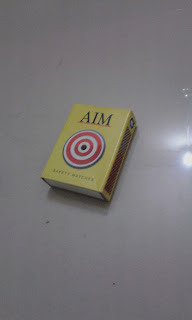Friends,
My 1st blog on "SaThi dusei" Puja was based on "SaThi dusei Puja after a kid's birth in Odisha".
http://ashishkumarnayakodisha.blogspot.in/2015/11/sathi-dusei-puja-after-kids-birth-in.html
This blog tells about "SaThi dusei Puja after the Ganesh Puja in Odisha".
On the 6th day of Ganesha Puja, the "SaThi dusei Puja" happens again as Ganesh is also considered also considered as a kid.
This is a little different from the SaThi dusei Puja after a kid's birth.
-In the morning, there will be the celebration of "Somanatha Brata" for Lord Siba(Siva).
Six types of foods are prepared as bhata(rice), dali(dal), macha(fish), chakuli(a cake like food made of rice), veg curry 1 & 2.
-Haladi (Haldi/Turmeric) is put on Sila Pua (The bar like instrument used in the old times "Grinder") and the it is covered with a cloth of turmeric/yellow color.
-5 types of plants are are bundled together: BAunsha (Bamboo), DhAna (Paddy), Bajramuli, ApamAranga, SAru.
-A PurnaKumbha (Kalashi/Pot with a coconut and mango leaves over that) is placed near that
-Gali Gua (A type of betel nut), Sindura PharuA (Vermilion case), KajaLa Pati(A case containing the black used for eye) are placed near that
-Then the BandA-panA(ବନ୍ଦାପନା - बन्दापना - Worship) happens with Duba (A type of grass), Barakoli Patra (Leaves of Barakoli), Arua ChauLa (A type of rice)
-In the night, the kids are patted with the bundled 5types of plants.
-People tie a piece of the Haladi Kapada (Turmeric/Yellow cloth) on the hand.
Thanks
Ashish
Translation in Odia: https://medium.com/@ashishkumarnayak/%E0%AC%B7%E0%AC%A0%E0%AD%80-%E0%AC%A6%E0%AD%81%E0%AC%B8%E0%AD%87%E0%AC%87-%E0%AC%AA%E0%AD%82%E0%AC%9C%E0%AC%BE-5b606d1b3ba9
My 1st blog on "SaThi dusei" Puja was based on "SaThi dusei Puja after a kid's birth in Odisha".
http://ashishkumarnayakodisha.blogspot.in/2015/11/sathi-dusei-puja-after-kids-birth-in.html
This blog tells about "SaThi dusei Puja after the Ganesh Puja in Odisha".
On the 6th day of Ganesha Puja, the "SaThi dusei Puja" happens again as Ganesh is also considered also considered as a kid.
This is a little different from the SaThi dusei Puja after a kid's birth.
-In the morning, there will be the celebration of "Somanatha Brata" for Lord Siba(Siva).
Six types of foods are prepared as bhata(rice), dali(dal), macha(fish), chakuli(a cake like food made of rice), veg curry 1 & 2.
-Haladi (Haldi/Turmeric) is put on Sila Pua (The bar like instrument used in the old times "Grinder") and the it is covered with a cloth of turmeric/yellow color.
-5 types of plants are are bundled together: BAunsha (Bamboo), DhAna (Paddy), Bajramuli, ApamAranga, SAru.
-A PurnaKumbha (Kalashi/Pot with a coconut and mango leaves over that) is placed near that
-Gali Gua (A type of betel nut), Sindura PharuA (Vermilion case), KajaLa Pati(A case containing the black used for eye) are placed near that
-Then the BandA-panA(ବନ୍ଦାପନା - बन्दापना - Worship) happens with Duba (A type of grass), Barakoli Patra (Leaves of Barakoli), Arua ChauLa (A type of rice)
-In the night, the kids are patted with the bundled 5types of plants.
-People tie a piece of the Haladi Kapada (Turmeric/Yellow cloth) on the hand.
Thanks
Ashish
Translation in Odia: https://medium.com/@ashishkumarnayak/%E0%AC%B7%E0%AC%A0%E0%AD%80-%E0%AC%A6%E0%AD%81%E0%AC%B8%E0%AD%87%E0%AC%87-%E0%AC%AA%E0%AD%82%E0%AC%9C%E0%AC%BE-5b606d1b3ba9












































